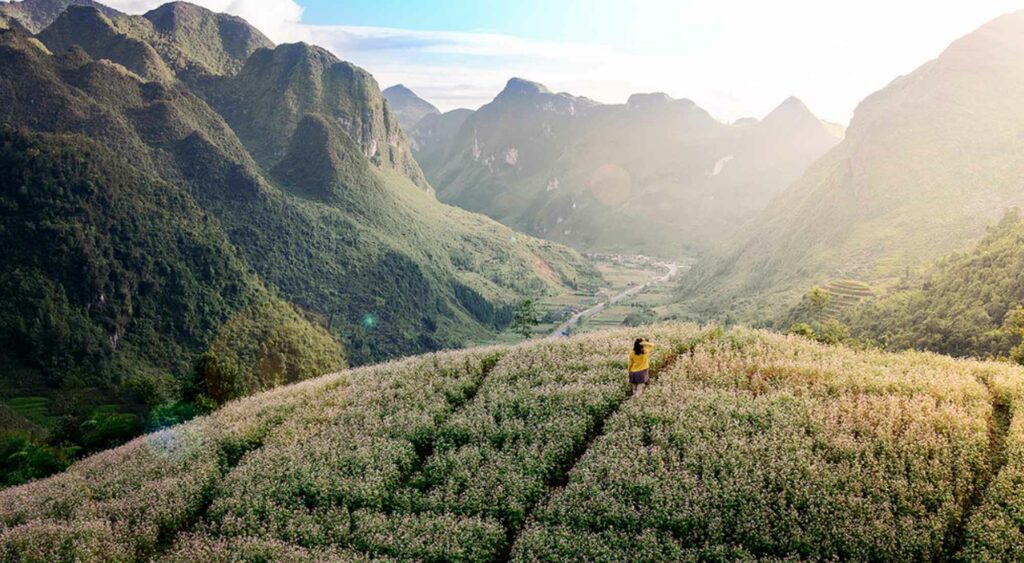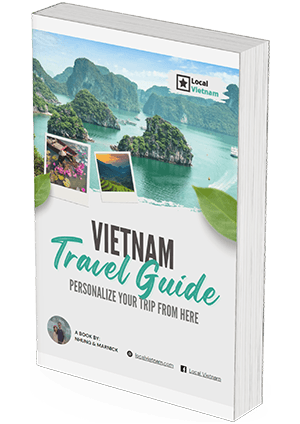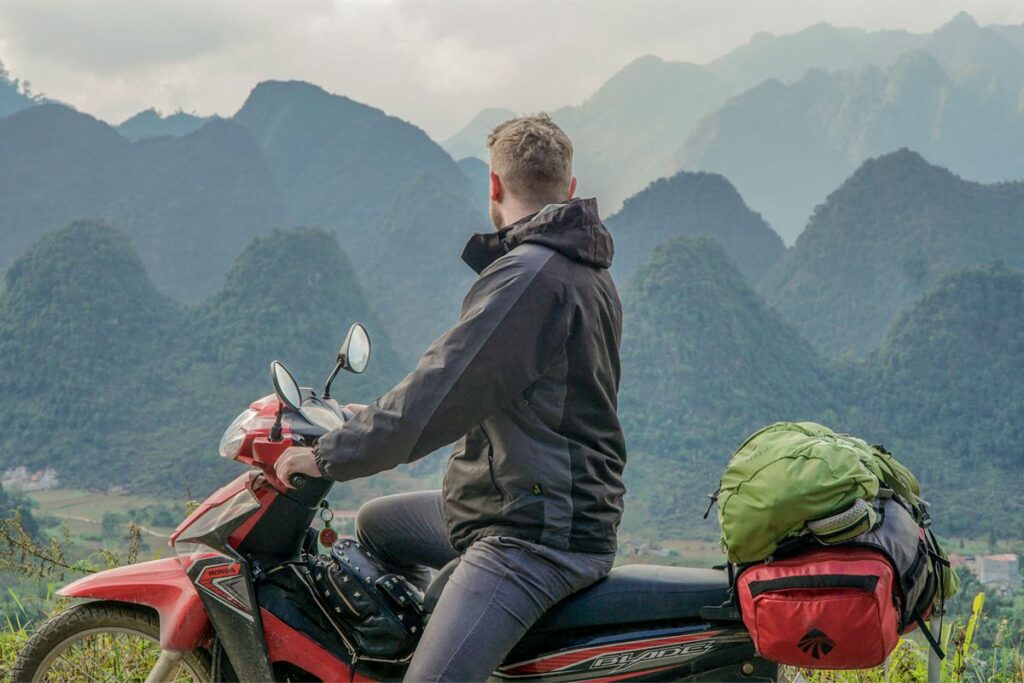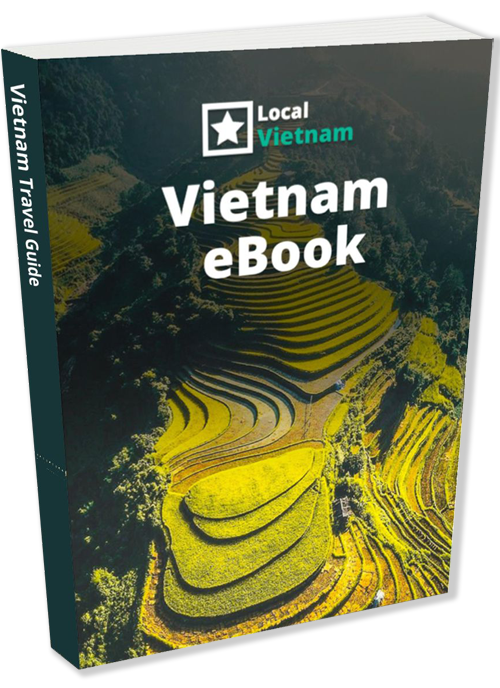Exploring Sung La Valley
A scenic stop on the Ha Giang Loop
Sung La Valley is one of the most scenic spots in Ha Giang, often called the “flower garden of Ha Giang” due to its vast seasonal flower fields. Located along Highway QL4C, about 127 km from Ha Giang City and 20 km before reaching Dong Van, it is an unmissable stop along the Ha Giang Loop. Travelers pass through Sung La as they descend from the Chin Khoanh Pass (Nine Ramps), revealing a spectacular panorama of rolling hills, terraced fields, and traditional Hmong villages.
A valley of flowers and farming
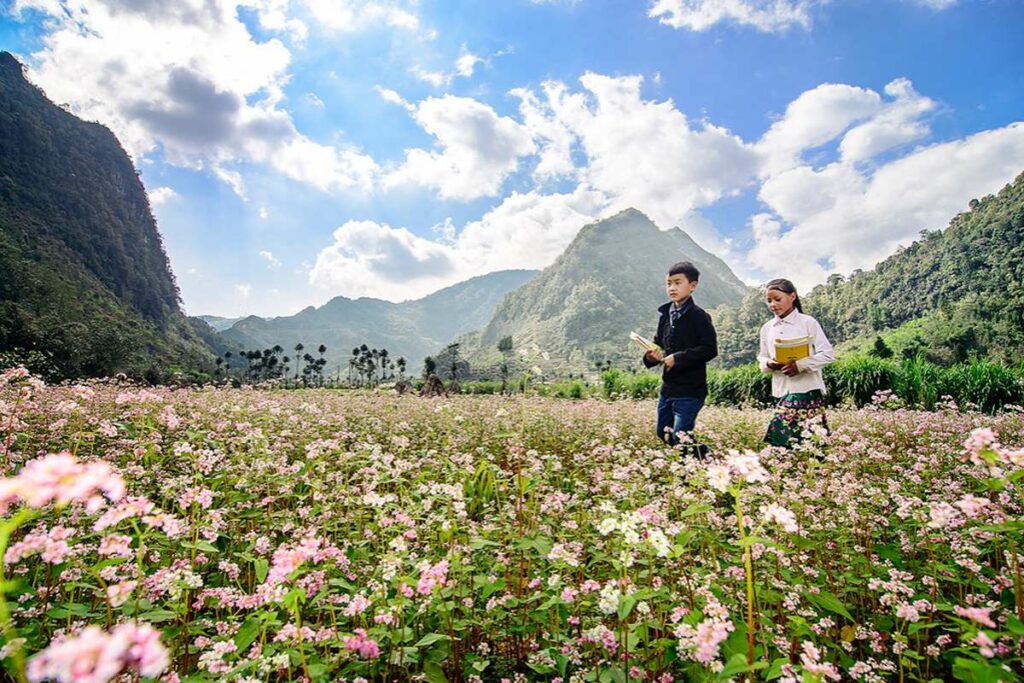
The valley is particularly famous for its buckwheat flower season, which blooms from late September to December, covering the fields in pink and white blossoms. In addition to buckwheat, Sung La is also home to corn and rice fields, making the landscape vibrant and ever-changing throughout the year. The combination of ancient stone houses, winding mountain roads, and blooming fields makes it feel like a fairytale setting.
Ethnic villages and cultural heritage
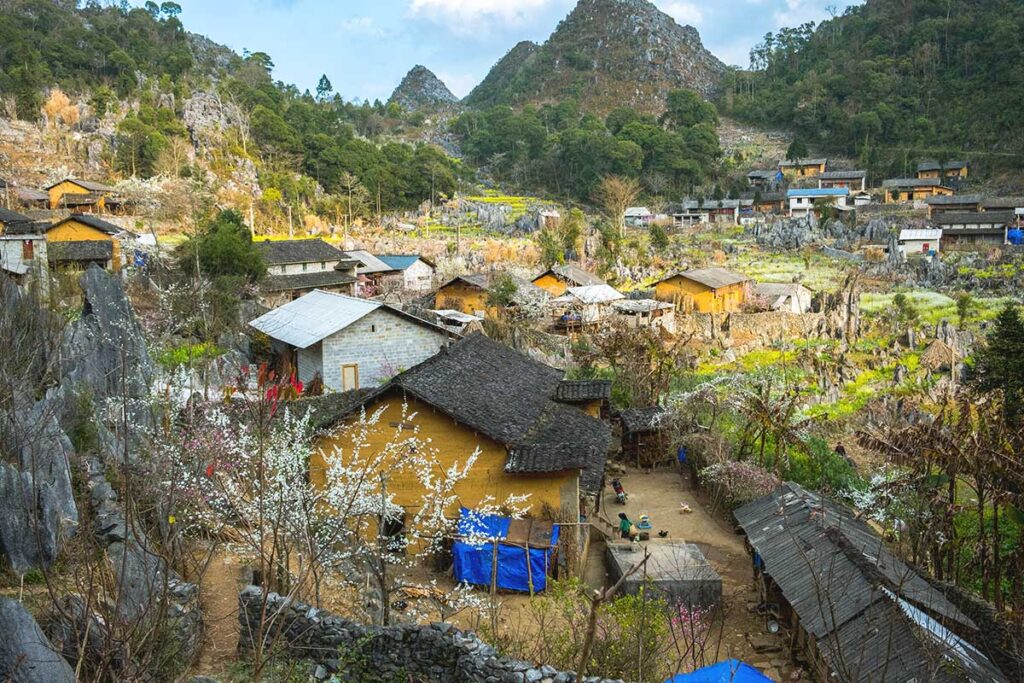
Sung La is also known among Vietnamese movie fans, as it was a key filming location for “The Story of Pao,” a famous Vietnamese film about Hmong culture. The house used in the movie, now called “Pao’s House”, has since become a popular cultural site for visitors, offering a glimpse into traditional Hmong architecture and way of life.
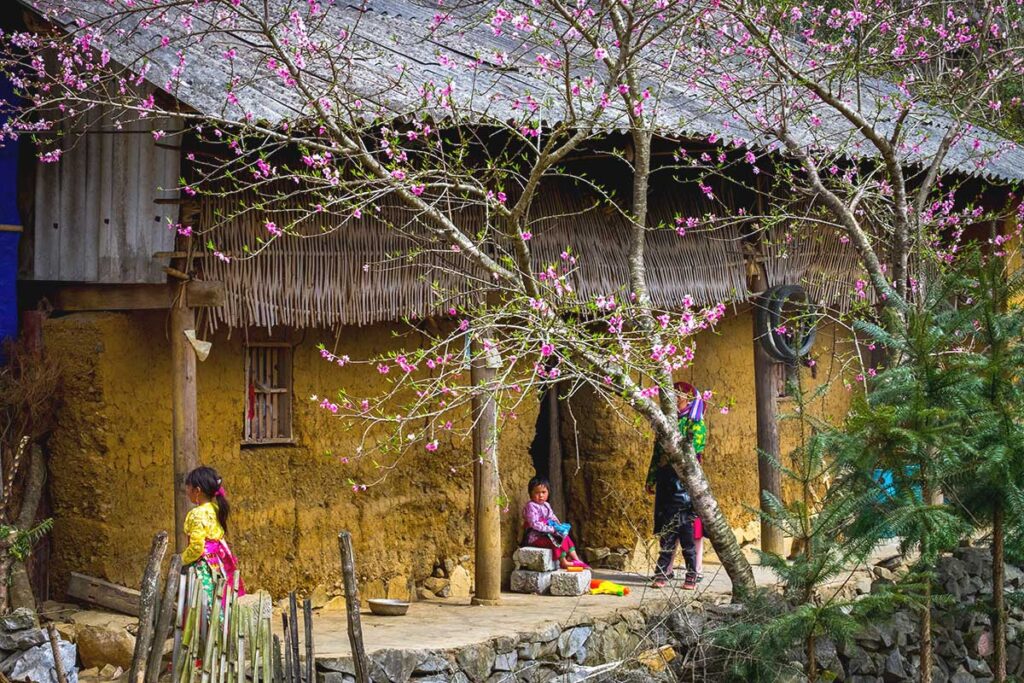
Beyond sightseeing, Sung La Valley is home to ethnic communities, primarily Hmong and Lo Lo people, who have lived here for generations. Their traditional stilt houses, stone walls, and small farms are scattered throughout the valley, and visiting their villages offers an opportunity to experience their daily life and rich cultural heritage. While Sung La is a peaceful rural area, it attracts many domestic tourists on weekends, especially during the flower season, when fields fill with Vietnamese travelers capturing scenic photos.
The House of Pao
The biggest attraction in Sung La Valley is the House of Pao. Don’t worry if you have never heard of it before, because it is mainly known for Vietnamese as the house was featured in a famous Vietnamese movie called “Pao’s story“, though the movie also had some international success. The movie takes place in this breath-taking primitive landscape and tells the story of a Hmong tribe girl named Pao. She was raised by her stepmother, for her real mother left her when she was little. One day, her stepmother dies in an accident, and she begins to track down her birth mother.
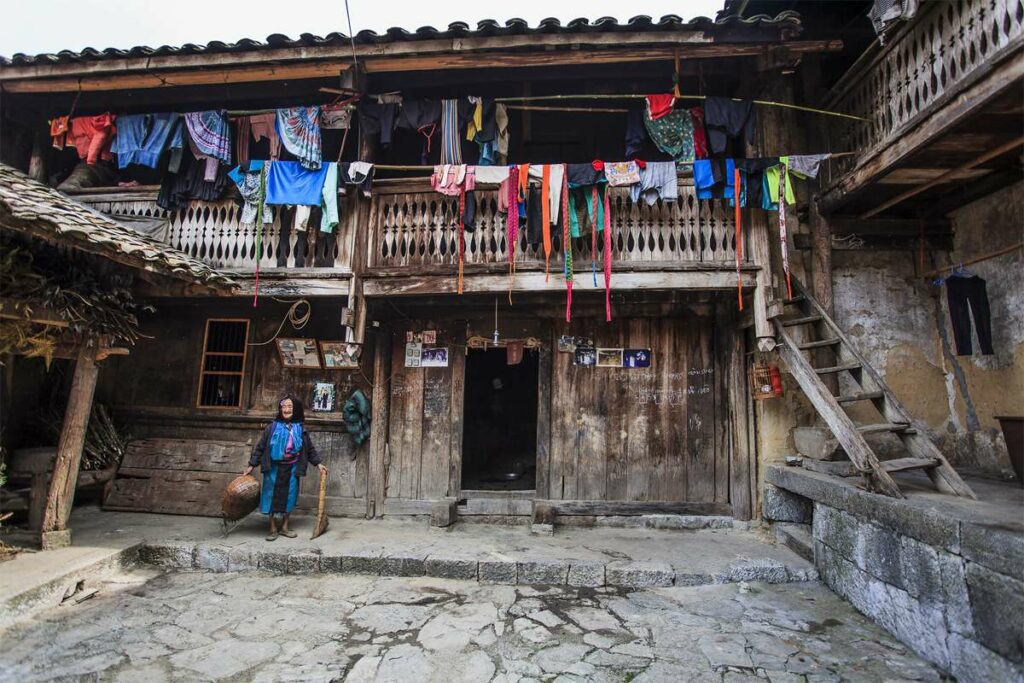
Although you might not be interested in visiting movie hot spots, the house itself is actually an authentic Hmong house and very beautiful. The seventy year old building has been the home to four generations. It originally belonged to Mua Sua Pao and after he and his son died, his grandson Mua Phai Tua inherited the house in 1980. Walking through the house gives you a good impression how a typical Hmong house looks like.
Entrance fee: 10,000 VND
Lung Cam Village
The House of Pao is located in Lung Cam Village, home to many ethnic minorities. Though there is just one famous house in the village, most houses here are beautiful and nearly 100 years old. There are around 60 families living between the walls of these ancients houses. Most of them are from three ethnic groups, namely the Lo Lo, Hmong and Han. The houses are made from locally collected materials, such as soil for the walls, stone for the tiles and wood for the doors and fences.
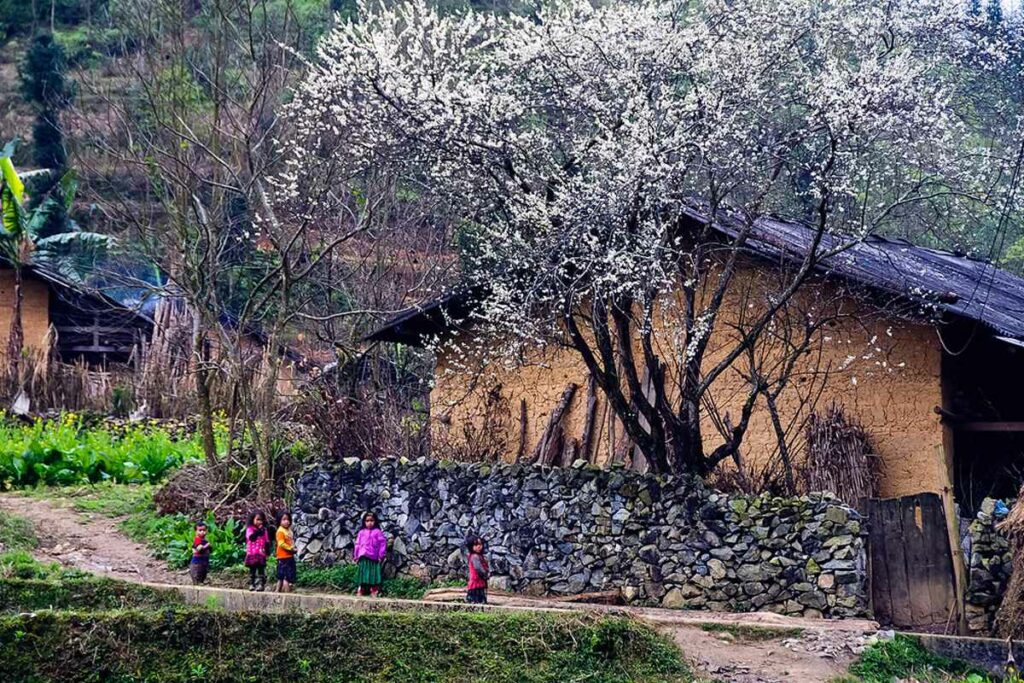
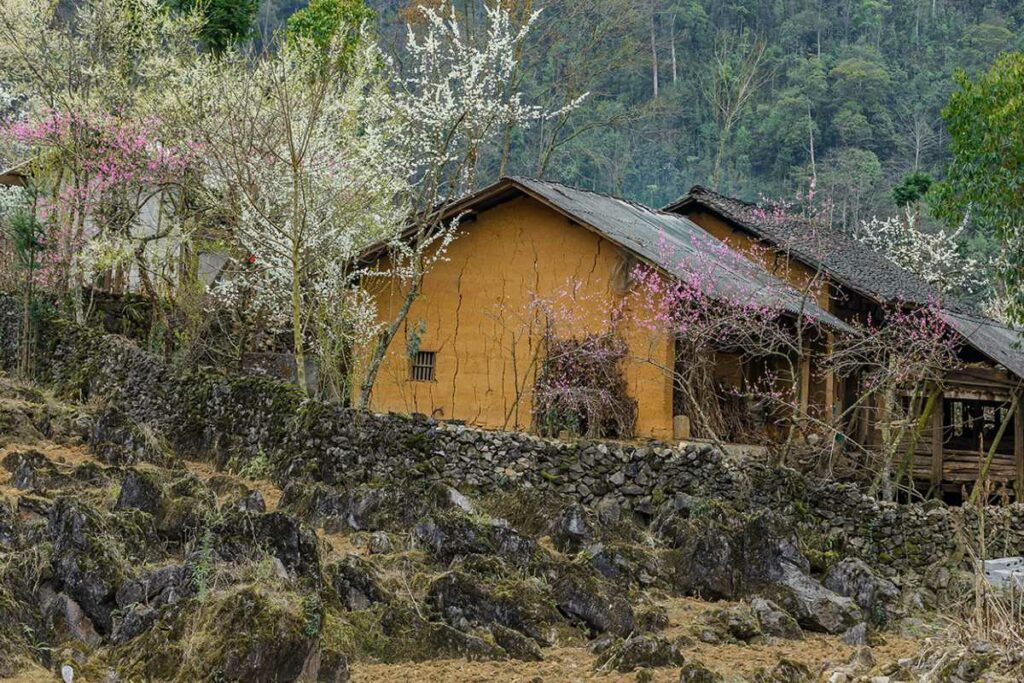
The Chin Khoanh pass
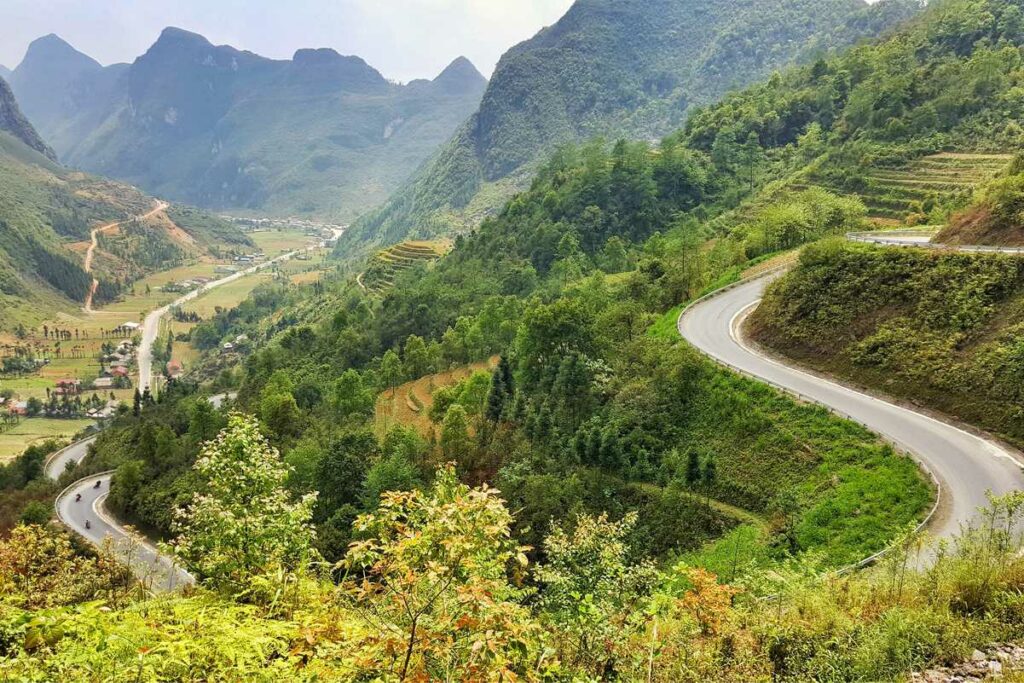
Before entering Sung La valley from Ha Giang City you will first drive over the Chin Khoanh pass, also called the 9 Nine Ramps, because of 9 turns on different levels. The road on the pass is in great condition and it is fun to drive all the way up. On top of the pass you have stunning views over the valley behind you.
Best time to visit Sung La Valley
Sung La Valley is beautiful year-round, but certain seasons make it even more spectacular. The flower seasons in particular attract many visitors, as the valley transforms into a sea of colors.
Buckwheat flower season (September – November )
The most famous time to visit Sung La is during the buckwheat flower season, when the fields turn pink and white. The main bloom happens in autumn (September – November). These flowers are traditionally grown by local ethnic communities on the hillsides, adding to the valley’s charm.
Spring (February – April)
Spring is another beautiful time to visit, with mild temperatures and vibrant landscapes. This season is also culturally significant, as many ethnic minority festivals take place around Lunar New Year (late January – February). These festivals provide a chance to witness traditional music, dance, and ceremonies.
Other Flower Seasons (June – August)
Beyond buckwheat, Sung La Valley also blooms with rhododendrons, wild sunflowers, and other seasonal flowers from June to August, giving the valley a completely different but equally stunning appearance.
Regardless of when you visit, Sung La offers breathtaking mountain scenery, traditional villages, and a peaceful atmosphere, making it a must-stop along the Ha Giang Loop.
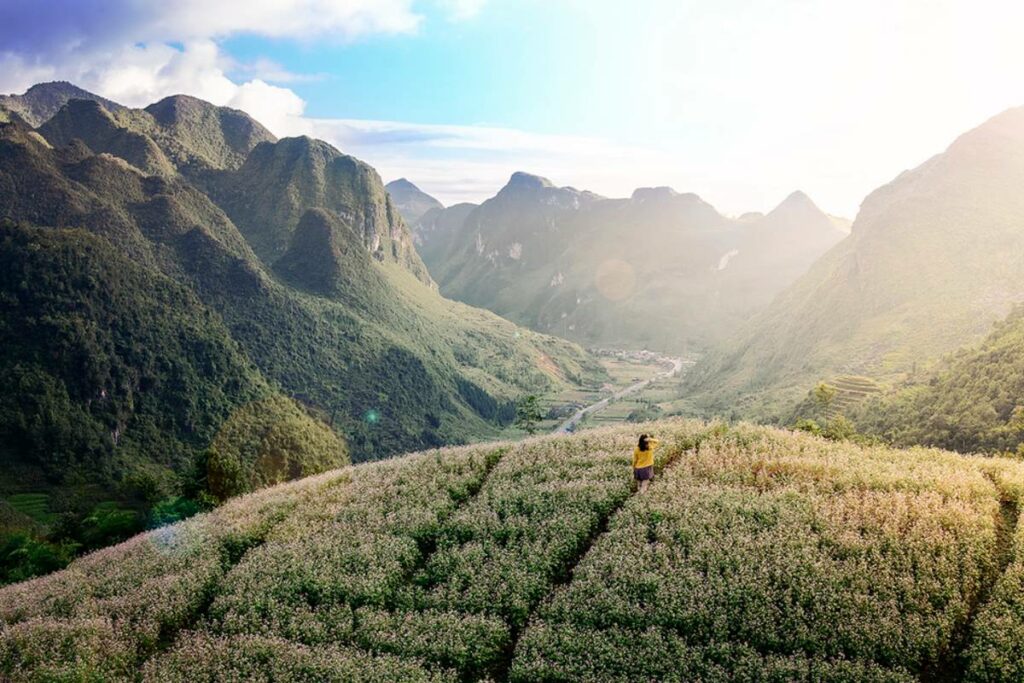
How to get to Sung La Valley
Sung La Valley is located along Highway QL4C, about 127 km from Ha Giang City and 20 km from Dong Van Town. The valley is a popular stop along the Ha Giang Loop, one of Vietnam’s most famous motorbike routes.
Tip: Visit Sung La Valley on a guided Ha Giang tour
Known for its peaceful villages and flower fields, Sung La Valley is included in many Ha Giang Loop tours. All tours come with transport, flexible routes, and optional local guides. See which tours include a stop in Sung La here.
From Hanoi to Ha Giang City
- By Bus: The most common way to reach Ha Giang is by sleeper bus (overnight) or limousine van (daytime) from Hanoi. The journey takes 6 – 7 hours.
- By Private Car: A comfortable but more expensive option, taking around 6 hours.
From Ha Giang City to Sung La Valley
Once in Ha Giang City, you can explore the Ha Giang Loop by:
- Motorbike: The most popular choice, allowing for freedom and adventure, but recommended only for experienced riders.
- Easy Rider (Motorbike with Driver): Ideal for those who don’t want to drive but still want the full motorbike experience.
- Car or Jeep Tour: A more comfortable option, great for small groups or those wanting a more relaxed journey.
The ride from Ha Giang City to Sung La takes around 3 – 4 hours, passing through stunning mountain roads, scenic passes, and ethnic villages. Most travelers visit Sung La on their way from Yen Minh to Dong Van.
Other sights around Sung La valley
Sung La Valley is a beautiful stop along the Ha Giang Loop, but there’s plenty more to see in the surrounding area. Whether you’re heading north to Dong Van or south toward Yen Minh and Ha Giang City, you’ll pass through breathtaking mountain landscapes and fascinating cultural sites.
North of Sung La – Towards Dong Van
Continuing north on Highway QL4C, you’ll reach Sa Phin, home to the Hmong King Palace. This historic palace belonged to the powerful Hmong rulers who controlled the region during the French colonial era. It’s an interesting stop to learn about local history and architecture.
From Sa Phin, you have two options:
- Head directly to Dong Van, a lively town with an old quarter, a bustling Sunday market, and plenty of accommodations.
- Take a detour to Lung Cu, the northernmost point of Vietnam, marked by a massive flag tower. While the flag tower itself is a symbol of national pride, the real highlight is the scenic road leading there, passing through small ethnic villages along the way.
South of Sung La – Towards Yen Minh and Ha Giang City
Driving south, you’ll pass through Chin Khoanh Pass and then reach Tham Ma Pass, one of Ha Giang’s most famous viewpoints. This winding, S-shaped road is a great place to stop for photos, and there’s even a small café at the top.
Further south, near Yen Minh, the landscape shifts from dramatic karst mountains to rolling green hills, offering a more peaceful but equally stunning view. If you continue all the way toward Ha Giang City, you’ll reach Quan Ba, home to the Twin Mountains (Fairy Bosom) and Heaven’s Gate, where you can enjoy panoramic views over the lush valleys below.
Planning Your Route
Most travelers visit Sung La as part of a one-day journey from Ha Giang City to Dong Van, passing all these major landmarks. However, if you want to include Lung Cu, you may need extra time, as the detour adds several hours to your journey.
Where to stay in Sung La Valley
Accommodation in Sung La is limited, with only a few homestays catering mainly to Vietnamese tourists. These family-run stays provide a warm atmosphere and home-cooked meals, offering an intimate cultural experience. Some options include:
- Basic houses with shared dormitory-style rooms
- Private rooms with simple but comfortable amenities
- Family-style meals featuring local dishes
For more variety, travelers often choose to stay overnight in Dong Van, which has a wider selection of hotels, guesthouses, and homestays.
Travel tips for Visiting Sung La Valley
- Time to spend: You can either drive through Sung La and make quick stops at flower fields and traditional houses or take a longer break to visit Pao’s House and explore the village. A short visit can take 30 minutes to an hour, depending on how much you want to see.
- Respect local culture: Sung La is home to various ethnic minority groups, including the Lo Lo, Hmong, and Han. Always be respectful of their traditions, and ask for permission before taking photos of people or their homes.
- Bring cash: ATMs are scarce, and many homestays only accept cash, so bring enough for accommodation, meals, and small purchases.
- Limited connectivity: Phone signal and internet access can be weak in this remote region. Download maps and essential information in advance.
- What to pack: Sung La’s climate can be cold in winter and hot in summer. Bring warm clothing if visiting in cooler months and sun protection for the daytime.
